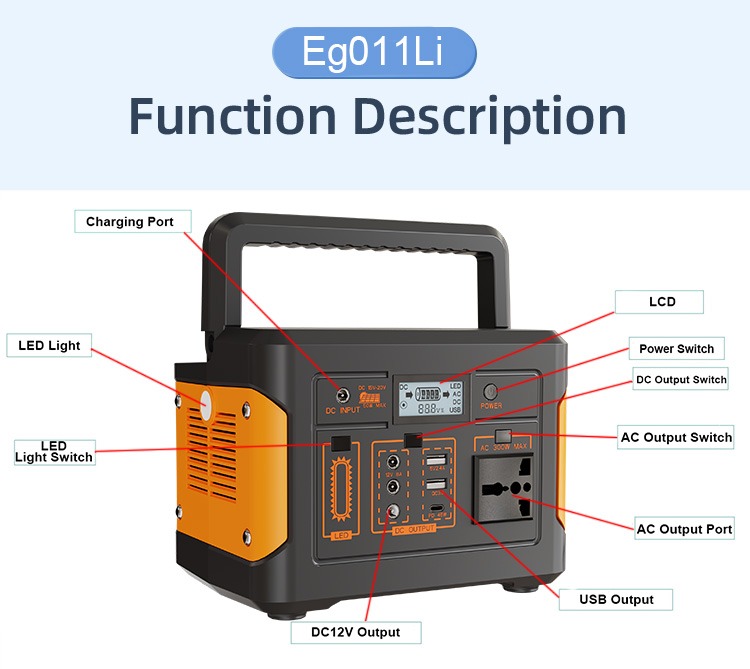Understanding Charging Times for Portable Energy Storage Power Stations
1/7/20254 min read


Introduction to Portable Energy Storage Power Stations
In recent years, portable energy storage power stations have gained popularity as essential tools for a variety of applications. These compact devices are designed to store electrical energy, enabling users to harness power when and where it is needed most. Equipped with high-capacity batteries, portable energy storage units serve a range of functions, providing a reliable and convenient source of electricity in situations where traditional power supply is unavailable or impractical.
Portable energy storage power stations are particularly useful in outdoor settings, such as camping trips, where they can power essential devices like lights, cooking appliances, and communication tools. This versatility allows outdoor enthusiasts to enjoy modern conveniences while still experiencing nature. Furthermore, these power stations are invaluable during emergencies, offering backup electricity in times of power outages caused by storms or other unforeseen events. In such scenarios, having a portable unit can mean the difference between comfort and hardship.
Aside from recreational and emergency uses, portable energy storage power stations are integral to various industrial applications. They can provide temporary power solutions at remote job sites, making them ideal for construction, surveying, or event management where access to grid electricity may be limited. Additionally, these units can be paired with solar panels, enabling users to harvest renewable energy and store it for later use, contributing to a more sustainable approach to energy consumption.
Understanding the operational capabilities, including charging times of these power stations, is crucial for maximizing their utility. As we explore the specifics of charging, we will provide valuable insights into how to select the best charging methods and optimize usage based on individual needs. This knowledge ensures users can fully leverage the advantages offered by portable energy storage power stations in diverse scenarios.
Main Factors Affecting Charging Time
The charging time of a portable energy storage power station hinges on several critical factors, each playing a significant role in determining how long it will take to reach full capacity. One primary element is the battery capacity of the power station itself. Generally, power stations with larger battery capacities, often measured in watt-hours (Wh), will require longer durations to charge compared to those with smaller capacities. This is due to the increased amount of energy needed to fill the battery, which directly influences the overall charging time.
Another crucial factor is the charging power, which refers to the output capacity of the charger used. Charging power is typically measured in watts (W), and a charger with higher wattage can transmit energy to the battery more quickly. For example, using a charger rated for 200W will generally charge a compatible portable power station at a faster rate than a 100W charger. It's essential for users to consider the charger specifications when aiming for optimal charging efficiency.
The method of charging also significantly affects the time required to recharge a portable power station. There are various charging methods available, including mains charging, solar charging, and car charging. Mains charging, which utilizes a standard wall outlet, tends to offer the quickest charging time, as it typically provides a consistent and high power output. Conversely, solar charging can be slower, depending on factors such as sunlight intensity and panel efficiency. Car charging usually falls in between, as it draws power from a vehicle's battery, which may not match the efficiency of mains power. Understanding these factors can empower users to manage their energy needs more effectively, ultimately enhancing their experience with portable energy storage solutions.
Battery Capacity Explained
Battery capacity is a critical factor in understanding portable energy storage power stations, as it directly influences both usage and charging times. Measured in watt-hours (Wh), battery capacity denotes the amount of energy a battery can store and subsequently deliver. For instance, a power station with a capacity of 2000Wh can potentially power devices for a longer period or support higher energy-consuming devices compared to a unit with a capacity of 500Wh.
When considering charging times, the disparity in battery capacities becomes evident. Generally, a greater capacity necessitates a longer charging duration. For example, if a 2000Wh power station takes approximately 8 hours to charge fully under optimal conditions using a standard charger, a smaller 500Wh battery may only require around 2 hours. The difference highlights the time investment necessary for users, particularly those who rely on these power stations for extended trips or outdoor activities.
Practically speaking, selecting a battery size should directly align with the intended usage and charging capabilities. Users who only need to charge small devices like smartphones and laptops may find that a 500Wh battery suffices. Conversely, individuals needing to power larger appliances such as refrigerators or electric grills might opt for a 2000Wh unit to ensure they have sufficient energy reserves.
Moreover, the charging method plays a significant role in the overall experience. For instance, using solar panels may extend the charging time, especially for larger batteries. Therefore, when choosing a portable energy storage power station, one must consider both battery capacity and the context in which it will be used. Understanding these dynamics greatly assists in making an informed decision that balances energy needs with charging efficiency.
Charging Power and Methods Overview
Charging power is a crucial factor when considering the charging speed of portable energy storage power stations. It refers to the amount of electrical power supplied to the device during the charging process and is typically measured in watts (W). The charging power falls into three categories: low, medium, and high-power chargers. Low-power chargers, usually rated under 30 watts, are suitable for small devices and may take significantly longer to charge larger power stations. Medium-power chargers range from 30 to 100 watts and often strike a balance between charging speed and energy consumption. High-power chargers, exceeding 100 watts, are ideal for quick charging but require a compatible device and infrastructure to maximize efficiency.
Each type of charger directly influences the charging time of a portable energy storage power station. For instance, using a low-power charger on a high-capacity unit could result in prolonged wait times, whereas a high-power charger can substantially reduce the charging duration. Therefore, understanding the power requirements of the energy storage device is essential for optimal performance.
The methods of charging are equally important and may include mains charging, solar charging, and car charging. Mains charging utilizes standard wall outlets, providing a reliable and often rapid way to recharge energy storage devices. Solar charging, on the other hand, offers sustainability and can be an excellent method for eco-conscious users; however, it is dependent on sunlight availability and may vary in efficiency. Car charging typically involves using the vehicle's power supply, which can be convenient during travel but may also vary based on the car's charging output.
When selecting the most appropriate charging method for a portable energy storage power station, one must assess their individual needs. Factors such as the urgency of power availability, distance from mains electricity, and personal values regarding sustainability should guide the decision-making process.
